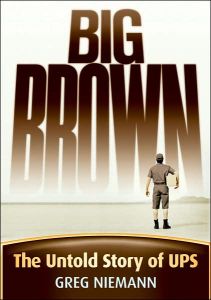The package delivery business is a huge industry that hinges on personnel and logistics, as author Greg Niemann explains in this informative, entertaining biography of the United Parcel Service. Niemann, a UPS career insider, explains how the company became a global leader. He gives credit to the values of its founder, Jim Casey, a hard worker from a humble background. Casey believed in strict routine, safety, precision, shared responsibility and fairness; he pioneered programs to distribute the company's wealth to his employees, while holding them to strict procedures. This absorbing corporate bio is more objective than you might expect, though clearly Niemann is a fan of Casey and UPS. getAbstract finds that his focus on Casey's entrepreneurship offers a fine example for anyone who is trying to make a company prosper.
Delivering the Goods
United Parcel Service drivers are familiar figures in more than 200 countries. With their brown uniforms (first issued in the 1920s), UPS drivers are the public face of a company built on trademarked customer service. The brown-suited drivers learn to move quickly as they make their rounds. Drivers handle as many as 200 drops a day, plus about 30 pick-ups. They are expected to manage 150-pound packages alone, so the work is physically demanding. Their "delivery car" is never called a truck, and they must complete their deliveries daily so the vehicle is empty when a new set of packages arrives. This detailed process must work well, because the company has boomed since James Emmett ("Jim") Casey founded it in 1917. UPS delivered 3.75 billion packages worldwide in 2005, and profits in 2006 totaled $3.87 billion.
To meet its ambitious delivery and pick-up goals, UPS relies extensively on efficiency experts, including many former drivers. To minimize wasted energy, they ascertain that every motion has a purpose. UPS studies ergonomics, psychology, physiology and anatomy so that drivers and packages suffer minimal stress and impact. Every aspect of ...
Greg Niemann, a Southern California travel and outdoors writer, had a 35-year career with UPS, moving up from driver to West Coast editor of the company's publications and a frequent liaison to top management.









Comment on this summary